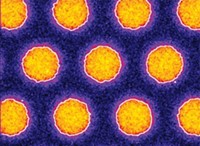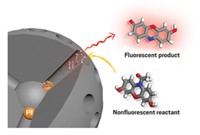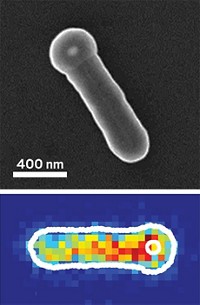Advertisement
Grab your lab coat. Let's get started
Welcome!
Welcome!
Create an account below to get 6 C&EN articles per month, receive newsletters and more - all free.
It seems this is your first time logging in online. Please enter the following information to continue.
As an ACS member you automatically get access to this site. All we need is few more details to create your reading experience.
Not you? Sign in with a different account.
Not you? Sign in with a different account.
ERROR 1
ERROR 1
ERROR 2
ERROR 2
ERROR 2
ERROR 2
ERROR 2
Password and Confirm password must match.
If you have an ACS member number, please enter it here so we can link this account to your membership. (optional)
ERROR 2
ACS values your privacy. By submitting your information, you are gaining access to C&EN and subscribing to our weekly newsletter. We use the information you provide to make your reading experience better, and we will never sell your data to third party members.
Analytical Chemistry
Catalytic Particles Feature Spatial-Activity Hot Spots
Microscopy method reveals that nanorod catalytic activity varies regionally across the surface of individual crystal facets
by Mitch Jacoby
February 27, 2012
| A version of this story appeared in
Volume 90, Issue 9
The level of catalytic activity mediated by one type of crystal facet can vary across the surface of that facet and also among several facets of a single type. This finding by Cornell University chemists suggests that knowing the surface structure of crystalline catalyst particles alone is not sufficient for predicting activity (Nat. Nanotechnol., DOI: 10.1038/nnano.2012.18). Decades ago, researchers found that some crystal facets, or faces, of solid catalysts are more catalytically active than others. Catalyst manufacturers have used that information to fine-tune preparation methods to enhance exposure of the most active facets. Cornell’s Peng Chen and coworkers used fluorescence microscopy with single-molecule resolution to monitor light-producing catalytic reactions on gold nanorods and discovered that facet-dependent activity turns out to be unexpectedly complex. By examining hundreds of highly faceted nanorods they determined that catalytic activity within a single facet exhibits a reactivity gradient that tends to increase from the center toward the facet edges. In addition, the relative reactivities of the ends and sides of nanorods vary widely among samples even though they exhibit the same types of facets, the team reports.





Join the conversation
Contact the reporter
Submit a Letter to the Editor for publication
Engage with us on Twitter